Previously on “The Intelligent Eater,” I discussed what my research has suggested are the expert-consensus healthy-foods; the “Green-light” foods. A concept I stole from Dr. Mikey Greger.
I think it is worth restating – I do not claim to be an expert myself. I am no doctor, scientist, or nutritionist. I am just a boy, standing in front of a reader, asking her to love him.. 🙂
However, over the past decade or so, I have been consistently reading what the experts write (including the actual research papers in recent years) and formulating what I view to be the most prudent approach to navigating an otherwise confusing and seemingly contradictory world.
In this post, I take you through the list of “Red-Light” foods, aka “don’t kill myself” foods. Even if you haven’t read  this article (which makes you a cotton-headed, ninny-muggins), I am sure you can guess what it will include: what I see to be the expert-consensus unhealthy foods; the ones to definitely avoid. (I have no idea if that semi-colon is correctly placed. Does anyone?!).
this article (which makes you a cotton-headed, ninny-muggins), I am sure you can guess what it will include: what I see to be the expert-consensus unhealthy foods; the ones to definitely avoid. (I have no idea if that semi-colon is correctly placed. Does anyone?!).
“Wait a second, Mister!” you might be thinking. “Last time you told us not to concentrate on what to restrict and to only concentrate on ‘adding good.’”
Well yes, that is the initial approach that seems to work given our psychological handicaps. However, eventually we will have to restrict the really bad (the below list), in order to keep the progress made by your newly green-lit bod.
Before I get to the Red-Light list, I will discuss why the negative impact of eating Red-Light is much greater than the positive effects of a Green-Light diet. I will also discuss the psychological hang-ups that seem to prevent us from avoiding things like sugar and refined grains. And, lastly, what those debilitating, and in some cases, deadly, effects are.
As always, if your health is not important enough to you and / or you are a poopy-pants in a rush, you can use that fat thumb of yours and fling this bible-quality text to the bottom half to view the foods that you’re probably shoveling into your fat face right now, you ungrateful, worthless sack of SH….woooooaaaahhh there.. I’m sorry about that.. Sometimes I get carried away.
 Ok…if you’re still with me… “Let’s ride..”
Ok…if you’re still with me… “Let’s ride..”
Losses Loom Larger than Gains
If you’ve read this article, you know that this blog is about being an “intelligent eater.” That is not to say you are a smart, smug, arrogant piece of shite, it is more to say an “aware eater.” I stole this idea from Warren Buffett’s mentor, Ben Graham.
Now, the second principle of Graham’s book (and Buffett’s current strategy) is to do what I already told you: to find the investments (foods in our case) that have a long track record of success and are currently looked at as strong companies.
However, the first rule of investing: “don’t lose money.” The second rule? “Remember Rule no. 1.”
Buffet’s partner and right-hand man, Charlie Munger, in his massive scroll, “Poor Charlie’s Almanack” says the following:
[Coincidentally, How Not to Die is the provocative title of Dr. Michael Greger’s best-seller].“All I want to know is where I’m going to die and never go there
Ray Dalio, founder of Bridgewater Capital, in his Principles, says something very similar: first he figures out how to not get knocked out of the game completely. Richard Branson, a hot-air-balloon racer and space-travel entrepreneur, remarks that his first order of business prior taking any risk is: “how do I protect my downside?”
Why are these guys so worried about protecting the downside? It is fairly obvious. As I mentioned in the green-light article, if you make a bad move, you can die. As in really die. That’s pretty bad.
Conversely, let’s examine the best possible result of a great thing, say, winning the lottery. OK, so now you have 20 mill – great. Research shows that in a matter of mere weeks you will basically be back to your normal state of happiness (or unhappiness).
Research shows that in a matter of mere weeks you will basically be back to your normal state of happiness (or unhappiness).
However, if you hit the opposite of the lottery – say the death lottery (what?) – then you’re out. So the worst possible outcome is comparatively far worse than the good that comes from the best possible outcome.
Ok, but death is a bit extreme. Does this work in anything more incremental? Yes. Let’s look at something more pedestrian – like skill building.
Apparently, the sucky thing about getting good at stuff is that it may take a while. Same seems to be the case with building a strong stock portfolio (if you don’t take the Black Swan or the Rusty Griswold approach), becoming decent at meditation, and, if you’re Jiro, making the perfect spicy tuna roll.
If you’ve read this article, you are familiar with Gladwell and the popularized notion of the 10,000 hour rule. In his Outliers, he argues that anyone who wants to master a skill must practice (deliberately) for 10,000 hours. And this applies even to the people we commonly think of as genius: Bill Gates, The Beatles, etc.
Dan Coyle in The Talent Code writes:
“The truth is, skill circuits are not easy to build; deep practice requires serious effort and passionate work.”
So how long does it take to start losing this skill? Perhaps just 30 days.
“Well, that’s really not fair.”
According to Dan Coyle’s research into how talent is built and learned (and forgotten), talent is nothing more than an insulation of neuronal circuits called “myelin.” The more myelin insulation, the faster you’re electrical circuits (movements and thoughts) fire.
However, if you were to stop practicing for a mere 30-day span, say, the circuit apparently begins to slow. I guess what my high school football coach said is true: “if we’re not getting better, we’re getting worse.”
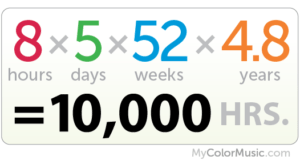 And given that healthy eating, at least at first, is very much like a skill or habit, we can easily see the translation to diet. It should be evident to anyone who obsessively steps on the scale each morning (actually, some research shows this to be good for habit-building), hoping for a a few tenths to have fallen off, that bad is far worse than good is good.
And given that healthy eating, at least at first, is very much like a skill or habit, we can easily see the translation to diet. It should be evident to anyone who obsessively steps on the scale each morning (actually, some research shows this to be good for habit-building), hoping for a a few tenths to have fallen off, that bad is far worse than good is good.
Recognize this scene? You eat perfectly Monday – Friday, you’re down 3.5 lbs, you’re feeling good, you’re telling all your friends, and then you hit up Nashville for a harmless, bachelorette party. But after some hot-chicken and bellinis at Steeplechase, and then some surprisingly delicious, NYC-style, late-night pizza at Five Points, you return to the scale Monday morning to find that you gained back 5.
It’s important here, I think, not to get to down on yourself. This tendency to wolf-down a BBQ pork sando and craft beer over the weekend, is not because you are a worthless sack of shiatzu. There is a perfectly good explanation for this and it is apparently based in evolution.
I will discuss these evolutionary drivers more in a future post, but it will suffice for now to say that we graduated way too fast from the forest to the supermarket. Our instincts for food did not “evolve” (or devolve) so quickly.
What is important to realize, is the mere weight gain, though upsetting to many, fails to grasp the full gravity of the harm here. By stepping on the scale and starting at your pathetic, shirtless body in the mirror- strategically sucking in and adjusting your belly-fat in order to eek out an ab or two (sorry, couldn’t resist) – you are merely inspecting the superficial result of red-light eating. But the worst causes are much deeper than your cavernous naval (and again).
When you eat green-light foods, you are giving your body, or even more precisely, your cells, the necessary materials to fix themselves. Further, you are giving them the resources to proactively improve efficiency, performance, and Healthspan.
By contrast, the down-side of stuffing your face with a cream-cheese-covered, lemon-poppy pastry is not merely the absence of those green-light materials. Although that would be bad enough.
Much worse, you are supplying the body with exogenous materials that create harm. It would not be an exaggeration – Wicked-Witch-Of-The-West-like as it may sound – to describe these materials as utterly “poisonous.” [Cue the dry-ice: “im melting, I’m melting…”]
– Wicked-Witch-Of-The-West-like as it may sound – to describe these materials as utterly “poisonous.” [Cue the dry-ice: “im melting, I’m melting…”]
My Naïve View of Red-Light Foods
I think we all have a basic sense of what is “bad” for us. Just like the green-light foods, you are not going to be shocked at what has made the below list. After all, they made the list because they are the industry consensus on what is horrible for your body.
What I did not appreciate until recent years, however, is just how horrible the direct impact of red-light foods can be, causing both short-term and long-term debilitating effects.
For most of my life, I thought about and evaluated whether to eat red-light foods in the following very inaccurate and unhelpful ways. Perhaps you can relate:
- “Is it“fattening?” [This is prime, ‘shit girls say’ territory]
- I’ll worry about it when I’m 64
- “As long as I workout today, I can take it easy on diet.” Or “I worked out this morning, I deserve ‘a break today.’” Or “I’m hungover (which is ‘cool’). A great idea then is to go get some greasy-ass shit-food. I’ll eat healthy when I feel better 1.”
- “I’m being a rebel. Rebels are cool. The benefits of being a diet rebel (which apparently are bountiful?) outweigh the minuscule impact of eating this brownie.”
- “My doc would kill me. This is funny. I’m sooo baaaddddd. Hahaha. I control my own life. I don’t need to live by his freaky-ass rules!!!”
Now, let’s examine the myriad issues with the above perspectives:
- “Fattening.” This word, in and of itself, is ambiguous. In order to define it, you’d have to actually understand the mechanisms which make you fat. Not to mention the waistline is merely a side-effect- not even close to the primary concern. I’d lose it. [Jerry: “beep, beep, beep?!”]
- Worry Later. Besides the many, many, immediate impacts red-light foods appear to have on heart, brain, mood, blood – this thought still doesn’t seem sensical. Because by the time you turn 64 (if you make it) much of the damage will have started to take a toll. [NOTE – this does not mean it is worthless to start eating healthy later in life – it always is a good idea]
- Workout = diet break. Two problems here:
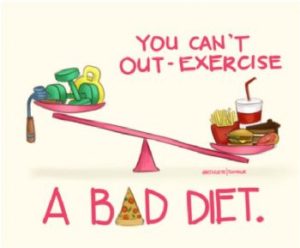
- (1) “You Can’t Outrun Your Mouth”: This is the warning of many-an-expert. The meaning: that hour you spent this morning looking like a tool on the elliptical doesn’t amount to a handful of peanuts (about 10 cals per peanut!). So you’re reward of that cream-based cap and croissant (~ 500 cals)– that’ll run ya at least two cross-fit classes (To get back to even!). Enjoy the ‘clean n’ snatch’-induced herniation 🙂
- (2). Different Mechanisms. Eating a wooden spoonful of sugar, for instance, may raise your blood pressure and heart disease risk, while sinking your mood. Working out, will not necessarily counteract these in the same way. So even if you achieve caloric balance (or even deficit) so as to lose or maintain your weight, the truly horrible negative effects may remain.
 Diet Rebel /I’m Funny/Rules Stink. The problem here is obvious: (a) you are probably not funny – you’re more likely a Bania-like comedic-hack; (b) as I mentioned, the effects are real and immediate. As you’ll see below, they are connected with cancer, depression, disease – you name it. The mischievous thought of “ooo my doctor would killl me…haha..” is at best, a warped reality – you’re like Kenickie and his attidude towards smoking, drinking and sex (leading to Rizzo’s ‘bun in the oven’). At worst, it is an attitude that will contribute to early health issues. Not so fun now is it? “Zero funny, Sir.”
Diet Rebel /I’m Funny/Rules Stink. The problem here is obvious: (a) you are probably not funny – you’re more likely a Bania-like comedic-hack; (b) as I mentioned, the effects are real and immediate. As you’ll see below, they are connected with cancer, depression, disease – you name it. The mischievous thought of “ooo my doctor would killl me…haha..” is at best, a warped reality – you’re like Kenickie and his attidude towards smoking, drinking and sex (leading to Rizzo’s ‘bun in the oven’). At worst, it is an attitude that will contribute to early health issues. Not so fun now is it? “Zero funny, Sir.”
- On Rules stinking: Perhaps following someone else’s unsubstantiated rules does stink. But ignoring evidence-based rules of biology and physiology? Is that cool? Hmm.
Among my friends and family, I find this last scenario to be a particularly rampant issue. It is also a very similar stance that I see taken when most of us fail to appreciate another serious concern: sunburn.
Nutrition,“Bronzing,” Disease and Cancer
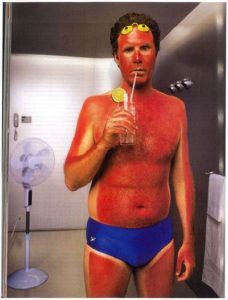
So the problem with my younger, naïve views towards red-light foods is that they do not seem to reflect reality. I mentioned this in the green-light article, but just in case you weren’t paying attention – perhaps dazed by the exciting prospect of chugging raw Brussels sprout and chard smoothies – red-light foods seem to cause immediate and significant damage to your DNA (where as green-light tend to repair this damage).
You know, DNA – that little twirly ladder that contains the source-code of your life?! The instructions for how to be a heart cell, a liver cell, and a brain cell. Damage to it can lead to yucky things like disease, cancer, no food, no jobs, and your pet’s heads falling off.
Really?! Ya.
Here’s my lackluster understanding of how cancer works: because of one reason or another, a cell’s DNA is damaged. This damage can be caused in a number of ways – usually an inflammatory impact of exogenous influence. With age, damage of some kind seems inevitable. Typically, our body can detect if a cell is damaged and will instruct that cell to die. Just think of Dr. Evil: “I expect them to die..” However, sometimes, the body, perhaps  overwhelmed by all the bacon-Twinkies, overlooks a rouge, Castor-Troy-like cell, that causes yo’ shit to be effed up. [“I’m gonna take his face….offfff” – what a joke]. (For More on cancer – here’s a simple 3-min summary).
overwhelmed by all the bacon-Twinkies, overlooks a rouge, Castor-Troy-like cell, that causes yo’ shit to be effed up. [“I’m gonna take his face….offfff” – what a joke]. (For More on cancer – here’s a simple 3-min summary).
Sunburn, much like sugar or trans-fats, is one of the many (completely preventable) exogenous influences that can cause this DNA damage. And similarly, our attitude towards it  seems perilously disproportional to the potential harm. “Sunscreen?! That’s for chumps! I need to bronze. Turn it up high, Reggie, I wanna BURNNNNNN…”]
seems perilously disproportional to the potential harm. “Sunscreen?! That’s for chumps! I need to bronze. Turn it up high, Reggie, I wanna BURNNNNNN…”]
I currently have three different friends who have had to get melanomas (skin cancer) removed from their bodies prior to the age of 30! So much for the “when I’m 64” talk…
Fun Fact: nutrition may be directly preventative against sunburn. Consider this study showing that eating antioxidant-rich foods (read: green-light) lowers your chances of skin burning and cancer. However, drinking alcohol may dramatically raise your chances of skin cancer.
So, think about the last time you were on that boat with a Corona “finding your beach” while wolfing-down a hoagie. Maybe you wanna exchange that for a mineral water and salad next time, eh, Gilligan?!
Maybe you wanna exchange that for a mineral water and salad next time, eh, Gilligan?!
So, a good goal might be to do what you can to limit the amounts of Cyrus “The Viruses” in your body. At least if you want to avoid bladder cancer. [“Oh nothing makes me sadder than the agent lost his bladder in the aaaaiiirrrplane.”]
Another major and immediate sucking of red-lights is that they damage your gut, or, “microbiome.” Who is your gut and what does he do? I thought you’d never ask… [sucking in a lot of air]
The Micro-Biome: A Quick and Amateur (pronounced douche-ily: “am-uh-ter”] Summary
Much of your body function is determined not by your brain, but by your gut and its processing and distribution of nutrients in the body. Besides your cells, there are other organisms living in your gut. They are bacteria–literally billions. Yes, the things you try to kill via Purell (talk about a company with a monopoly). Most of them are actually there to help. After all, they want to stay alive and so it behooves (is there a worse word?) them to create a symbiotic relationship with your belly.
The gut is protected by a pathetically thin and vulnerable lining. The bacteria help to maintain the integrity of this “wall” [about as much of a wall as the one that Trump was going to build…]. Like LA Jack has told us: this (gut) world is protected by people on walls with guns. (“You, Lt. Winestein!?”)
Well, they help maintain the wall if you give them what they want to eat – such as fibrous, green-light foods. The byproduct of their consumption of these foods are things called “short-chain fatty-acids” and they provide the bricks for the wall.
But if you give them poisonous red-light foods, guess what they do: they turn evil. Back to the Castor Troy / Cyrus Grisom thing. I am not really exaggerating. They turn into the so-called “bad bacteria” (or the “good die young”) and cause all kinds of havoc in your gut and, therefore, your body. These things apparently include: inflammatory bowel disease, cancer, and even autism.
Given its importance, I will get much more into the gut in future articles, but the above suffices for now: red-light food = bad for gut = bad for body / brain = poopy.
Outside of the gut and cancer, there are other mechanisms through which red-light foods wield negative and immediate damage: mood, breathing, blood pressure, and, the grand finally: intelligence. Congrats on the hot-dog eating title – you are now 3 IQ points dumber [“and may god have mercy on your soul”]. We will explore many of those facts below.
And now…who’s excited for a meaningless, colorless life without sugar, alcohol, or fun!!!??
___
The Red-Light List
Just like the Greens, the Reds are not so surprising. However, I’d pay special attention to the alcohol and the oils, as you might not be familiar with all of the relevant research – at least if you get all of your nutrition info from Men’s Health and / or Buzzfeed.
Another thing I’d really concentrate on is some of the supporting research on how terrible the effects of these foods are – especially on your mental health and your (probable) goal to not get cancer…
The good news? Though the negative effects of Reds trounce the positive impact of Greens, this list is about half as long.. Your welcome.
Oh, and you’ll notice a lot more concentration on sugar and alcohol than other foods since y’all a bunch-a pixie-stick-snortin,’ boozey bastards!
Ok, now let’s get to the foods that paradoxically make life better in the same exact moment that they are aggressively attacking your body like and unstoppable rebel force, day…by day… by day…
Trans-Fat (99%)
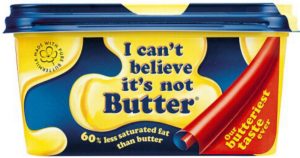
The Skinny: Trans-fat seems to be mostly a processed creation from our good, health-conscious, friends from the industrial revolution around the beginning of the 20th century. So thanks to fat, white men probably named Wilfred, Archibald, or Percival, we were put on to a lovely path of death.
Trans-fats exist in things with “hydrogenated oils” (combining hydrogen w/ veggie oil) which made it last longer, easier to use in certain cooking processes, and, of course, cheaper. The only down side? That measly, little trifle called heart disease. Damn!
Funny (or scary) enough, we didn’t really know anything about the ill-health effects of trans-fats until the 1990s! Luckily, many restaurants and vendors have wised-up and banned this creation from God’s green earth. Thank heavens!
What’s It in? Baked goods, fried goods, various commercially-processed deserts, margarine (does this still exist?)
Negative effects: seems to: raise LDL, aggravate inflammations factors, inhibit various mechanisms responsible for controlling blood flow, calcify arteries, etc.
Processed Meat (99%)

If you haven’t seen Food, Inc., I would watch it. Or, if you want to have something to talk to your liberal, probably upper-middle, or upper-upper, class friends, watch this one. Either way, the point is made that processed meat is another one of these creations of ours.
Of course, again, no one is really advocating the intake of processed meat, outside of Applegate, Boarshead, and Subway. Even heavy meat proponents like Loren Cordain, a prophet of the Paleos, are firmly against this. From The Paleo Diet Revisited:
“Processed meats are synthetic mixtures of meat (muscle) and fat combined artificially at the meatpacker’s or butcher’s whim, with no regard for the true fatty acid profile of wild animal carcasses that our hunter-gatherer ancestors ate. In addition to their unnatural fatty acid profiles (high in omega 6 fatty acids, low in omega 3 fatty acids, and high in saturated fatty acids), processed fatty meats are full of preservatives such as nitrites, which are converted into potent cancer-causing nitrosamines in our guts. To make a bad situation worse, these unnatural meats are typically full of salt, high-fructose corn syrup, wheat, grains, and other additives that have multiple adverse health effects. So, artificially produced, synthetic, factory meats have little or nothing to do with the wild animal foods our hunter-gatherer ancestors ate, and they should be avoided.”
Even Dr. Atkins, the pro-meat, anti-carb, god himself warned (though not as loudly as he warned against eating starchy veggies!) against consumption of processed meats due to nitrate and possible carcinogenic content.
Would this include freshly-cut, hormone-free and nitrate-free, organic deli meat? No, I will address that in the Yellow-Light foods.
Refined Grain, Processed / Packaged items (99%)
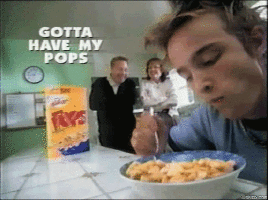
From the Mayo Clinic:
“In contrast to whole grains, refined grains are milled, a process that strips out both the bran and germ to give them a finer texture and longer shelf life. The refining process also removes many nutrients, including fiber. Refined grains include white flour, white rice, white bread and de-germed cornflower. Many breads, cereals, crackers, desserts and pastries are made with refined grains, too. These processed foods will not keep your blood sugar levels steady, which is why you will be hungry again soon after consumption.”
The Carb Straw-Man. What seems to get confused in the literature and in these diet-guru wars, seems to me to be what kinds of grains we are talking about. It seems to me what the Wheat-Belly-and-Grain-Brain-type peeps tend to do is create a bit of a straw-man case of the apparently high-carb promoters and then beat it to a processed, wheaty pulp.
The studies that are pointed to all use processed or refined grains to fill out the “high-carb, Low-fat” side of the experiment. This, of course, confuses the issue. No one is defending these grains. Not even those ghastly vegans!
This reminds me of one of the great films in cinema history: Rocky III. You’ll recall how Mickey was carrying Rocky, making sure he kept the belt. Then, as soon as he faced a killer – Clubber Lang – for the first time, he was KO’d embarrassingly.
Carb Dopin’: Similar to sugar, these synthetic creations seem to impact the brain similar to certain drugs. From researcher, Dr. Joel Furman in The End of Dieting:
“Investigators from Boston Children’s Hospital in Massachusetts recently found that a meal high in refined carbohydrates produced brain effects consistent with those of drug addiction. Every single subject showed intense activation in the nucleus accumbens, the area of the brain related to addiction.”
Besides Drug addictions: hypertension, type-2 diabetes, cardiovascular disease, big tummy.
Gluten Stuff, Like Wheat, For People Who Actually Have Celiacs Disease (99%)
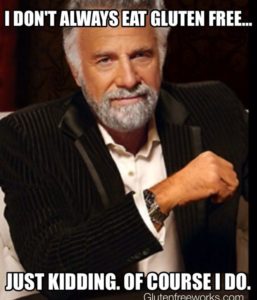
Uhh, You Don’t Have it (probably). It turns out that this Gluten scare is real! Well, for less than 1% of the US population. Meaning that you are more likely to be allergic to the sun Or die in a transportation accident. Having CD is about as likely as finding out your kid is a genius (1 in 250) or marrying a millionaire (1 in 200) (“what was all that ‘one in a million’ talk?!”) So, unless you’re Tom Cruise in Cocktail, ya know, you probably don’t.
Conveniently, the only people this does not apply to is if your family is rich and you’re from Rye, NY, and you’re a white girl, and you went to ‘Cuse, and you identify as being “Gluten-free”: “Are you gluten-free?” “I heard he’s eating gluten-free now.” “I’m soooo sorry, but do you have any gluten-free bagels…?” JK, LOL, BRB.
A Note On Gluten-Sensitivity. So with the gluten craze, people were clamoring to know more. So they did studies like this, probably funded by the oat people (oat does not contain gluten), which did seem to show some negative response from gluten for a similar percentage of the population who do NOT have celiacs disease.
The problem? It seems that (a) this might actually be a wheat-sensitivity and (b) people with this sensitivity seem to be sensitive to many things.
Lastly, much of the benefit for this small percentage may come from simply avoiding processed products. We will discuss more about wheat in general in Yellow-Light foods.
Earth-to-Matilda: the fact that something is Gluten-free does not mean it is healthy. The last place I’ve seen gluten-free label was on water. This is like listing fat-free on a 5-iron. (“5-iron, huh? Well, you’re fired.”)
Sugar (90%)

First -Caution:
From what I’ve seen and read, synthetic / added sugars seem to be a consensus red-light. Indeed, Researcher and Interfacer, Dr. Rhonda Patrick has spoken out against it many times. However, my goal here is not to marry myself to a conclusion – no matter how obvious it may seem – in the light of contradictory evidence.
And so the reason Sugar is at 90% and not 99% is that in my research for this article I have come across several meta-analyses – large reviews of the current academic literature available on the subject – and have been a bit shocked at the inconclusive results (e.g. here and here).
For this reason, our conclusions on sugar should perhaps be tempered a bit until studies are employed that are better qualified to answer the unsolved mysteries.
To be clear, I do not think either of these studies (which were funded by people interested in sugar’s continued proliferation) in anyway prove that sugar is not in fact as horrible as we believe – it very well may be. However, it might show that our current research is not as strong as we thought and we need to employ better methods.
With the above caution in mind, please read the below with a grain of … sugar.. (but no more than a grain, as I have yet to see a positive effect implied by any synthetic or added sugar).
[If you get the picture referenced under the “Sugar” heading above – bonus points.]
The issue with sugar is not that we generally don’t know it is bad, it is that we are confused about what type of sugar is bad and just how bad it really is. [Note: I am going to focus on sucrose and fructose though I realize that there are other forms of sugar].
General Propositions. Below are two general propositions about sugar that seem to hold up even with all of the low-carb, slow-carb or ketogenic proponents claiming differently:
- Generally, the sugar in fruit does not seem to harm us- while the other nutrients in fruit help dramatically. (I will provide support below).
- Sugar in any other form, especially sugar that has been made in a factory, such as high-fructose corn-syrup (“HFCS”), or stripped from a fruit, like date or beet, or perhaps sugar from coconut, honey or various syrups, all seem to have harmful effects without the saving effects that fruit would promote.
Note: Having said the above prop 1 about fruit, notice that berries make the green-light foods while fruit in general I have held elsewhere as to make certain important distinctions.
So let’s define which sugars we are talking about and discuss the probable effects of consuming each.
- Sucrose. Sucrose exists naturally in plants. However, thanks to your boy, Ray Lemieux (Mario’s cousin)[not really], we have “refined” it and provided the form we know and love: table sugar. The sucrose of Domino’s Sugar, Marry Poppins and the Bug in Men in Black, Edgar
 .
.
By most accounts, refined sucrose is horrible and, as referenced above, seems to negatively impact blood pressure, increase risk for heart disease, and may contribute to mental disorders. In other words, unless you are Edgar – it will likely eff up yo’ shit.
What Qualifies: White Sugar, Sugar Cubes, Brown Sugar, Cane Sugar, Simple Syrup (sugar in water), Coconut sugar (75%), Palm Sugar, Candy Corn, Candy Canes, and anything Buddy the Elf eats.
Earth to Matilda: Organic ≠ healthy. All organic forms of the above are also tur-i-bul
Your Brain on Sugar? Dr. Joel Furman references this study which indicates sucrose may create similar dopamine shot as drugs. “Concentrated calories like sugar and oil, for instance, produce within food addicts a surge in dopamine levels similar to the levels found in people who abuse illegal drugs.”
- Fructose (or to Tim Ferriss: Fr-Uh-Ck-Tose)
As I mentioned in the berry section of the green-light foods, it seems that not all fructose is created equal. Yes, it does make up half of sucrose (along with, ya boy, glucose), but that is in the synthetic form.
Fructose in Sucrose vs. In Fruit. Many experts, Michael Pollan among them, discuss the combinatory effects of foods. The implication is that the in-fruit fructose does not negatively impact us because of what it is wrapped in: polyphenols, carotenoids, and fiber (oh my!). The combination of these bodily allies seems to reduce risk of heart disease, stabilizes blood pressure, and may even combat cancer. I’ve written about how the fructose in berries does not seem to cause any negative issues with insulin – and, in fact, it has been shown to do the opposite.
The Negative effect of processed, “out-of-the-fruit” sugar: You can see the conclusions about fructose in studies like this one. Yes, it is fructose, but it is not inside of an apple. It is inside of a drink – similar to how high-fructose corn syrup would live inside a cola. In the referenced study, the discuss the method: “After an overnight fast, participants were given one of 3 different isocaloric drinks, containing 50 g of either fructose or glucose or sucrose dissolved in water.”
Again, unless you are a bug, don’t do that.
A note on Honey and maple syrup. Honey is bee vomit. Well, technically, cries the honey industry, it isn’t fully digested, but rather stored in its second stomach – the “honey stomach.” Seriously. Plus, you are enslaving Barry the Bee.
digested, but rather stored in its second stomach – the “honey stomach.” Seriously. Plus, you are enslaving Barry the Bee.
Maple syrup is tree sap. Not quite as bad sounding, but what is important to remember is they are extremely concentrated calories that do not carry with them all the fiber and nutrients that, say, a fruit would carry. Though they do have some. (This article Seems to be a decent summary.)
I like to think of these the same way that Dr. Furman does: concentrated, liquid forms of calorically-dense, but relatively nutrient-poor foods are probably not ideal.
A Note on artificial or natural sweeteners: You might still be on the diet-cola train, thinking to yourself: “self, you deserve a sweet, shitty product (nutritionally) but I don’t want you to get all those calories and sugars – so we’re totally safe if we go with diet cola!”
The problem? This doesn’t seem to be true. There has been a bunch of research showing the negative effect on sweeteners on the gut, insulin response, CVD, and brain function.
This study showed an apparent negative impact on our gut from stevia. But it might be dose dependent.
- Note: this study may suggest that erythritol is OK in small does (maybe even beneficial). But, for the most part, I’d avoid things in packets.
Personal Note on Weaning Yourself Off of Sweeteners and Sugars
I used to love sweetened iced-tea – like “Diet-Peach Snapple” – obviously right? Who didn’t? It is, after all, “made from the best stuff on earth.”
 In fact, around this time, my sister started to work for a company who was introducing a tea product that was “just a little sweet.” And guess what? I hated it! I told her, it’s too plain, no taste. Agreeing, and not liking the job, she went on to quit and forfeit her equity stake in the, then, 32-person company. Turns out we were no indication of the general population – this company later sold to Coke for like $40 mill. Sorry, Marnzee (middle of pic) 🙂
In fact, around this time, my sister started to work for a company who was introducing a tea product that was “just a little sweet.” And guess what? I hated it! I told her, it’s too plain, no taste. Agreeing, and not liking the job, she went on to quit and forfeit her equity stake in the, then, 32-person company. Turns out we were no indication of the general population – this company later sold to Coke for like $40 mill. Sorry, Marnzee (middle of pic) 🙂
Over time, convinced that Diet-Peach Snapple was horrible for me, I began to just drink iced-tea with lemon in it. And guess what happened? Over time, as seems to typically the case, my taste buds changed. I started to prefer unsweetened beverages. Similar to beer (a red-light, of course), at first I found it revolting. But, eventually, convinced of the benefit, and with consistent exposure, I turned.
Perhaps start slow. Maybe just add one Splenda instead of seven, and a touch of cream. Then slowly add less and less. It worked for me.
“Moderate” Alcohol (90%)

The Skinny: Ok – so no one in the world, except maybe Jack Sparrow, thinks that drinking more than, say 3 drinks per night, is a good thing. Most people would say it is pretty terrible. However, the reason this is not 99% is that we have to deal with two issues: (1) the “moderate” drinking proponents and (2) the red-wine proponents. Ok, let’s deal with each in turn.
- Moderate Drinking is Good?
In this study, a benefit was found by people drinking a moderate amount per night (1 for gals, 2 for guys), correlated with longer lifespan.
Wait, what? Alcohol is good?
What’s going on here?
Well, it seems alcohol is a blood thinner, and thinner blood means less clogging, which may mean less heart disease – the #1 killer. From the study: “Thus, alcohol reduces the risk of coronary vascular diseases both by inhibiting the formation of atheroma and decreasing the rate of blood coagulation.”
So, the logic goes, drink alcohol to live longer. Hmm, something seems off here, ya?
There seem to be two problems:
- Who Benefits? This follow-up to the above study showed that there was only a moderate benefit for people who were “couch potatoes.” The healthy people – called the “health-freaks”- were designated liberally: merely not smoking, exercising 30 min daily and eating ONE veggie or fruit per day is enough to get the nod. “Health-Freaks” saw no benefit.
- Cancer. Cancer is the 2nd leading cause. So even though alcohol seems to increase cancer-risk (Specifically breast cancer), since it decreases risk of the number 1 killer, the overall effect (for the smoking, non-exercising, non-veggie eaters) is a slight lengthening of life.
Summary: I think if you are drinking alcohol on any kind of regular basis, you’d seem to be putting yourself in harm’s way through a variety of mechanisms: inflammation and cancer-risk among them. I’d steer clear for the most part. IF you want to thin your blood, why not just use wholly beneficial resources such as turmeric (“daily consumption of the curry spice turmeric might help maintain anticoagulant status.”)
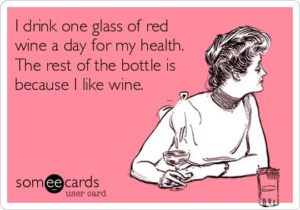 Red Wine is Healthy?
Red Wine is Healthy?
I think it is best to treat red wine at best as a Yellow-Light food, and that would be pushing it. I personally think it is more helpful to break it into its component parts: alcohol (red-light) and grapes (green-light). So together they average as Yellow? As much as I would like that to be the case, it is hard to say – and here is why.
Why Is Red Wine Thought to be Healthy?
Well, it does have some polyphenols in it (a powerful form of antioxidant). It has also been implicated as an explanation for the “French Paradox” – the apparently thin and healthy people who seem to smoke, eat bread and cheese all day, and drink wine nightly. Additionally, there have been a few associative studies, including the famous, Nurses Health Study, that have shown positive effects, or at least no ill-effects, of red wine compared to other alcohol consumption.
Resveratrol. One of the polyphenols found in red wine is resveratrol. There have been promising studies on resveratrol supplementation using rats and Petri dishes. The benefits seem to come from the grape skin themselves, which is probably why white wine – a wine left to “steep” in the skins for a much shorter period – does not seem to show the same health benefits.
Resvertrol is a great example of the problem I alluded to in this post: the fact that Public-Interfacers tend to claim they know something when the data are inconclusive. There are two issues: (1) most of the studies done are in Petri dishes and rats and (2) the polyphenol exists in grapes – so why do we need the alcohol?
In his book, Brain Maker, Dr. David Permutter, Public Interfacer, appears to overstep the actual conclusions drawn by Researchers. Notice the certainty with which he writes:
“Resveratrol, the natural polyphenol found in grapes, slows down the aging process, boosts blood flow to the brain, promotes heart health, and curbs fat cells by inhibiting their development. It also has a favorable effect on gut bacteria (they love their wine, too!).”
Notice not a hint of hesitancy in these quite bold implications. But a review of all of the available research by Researchers has a far less optimistic conclusion:
“The versatile properties of resveratrol found in in-vitro and animal studies have not been unequivocally confirmed in human studies… consumption as a supplement is not justified by the existing scientific literature.”
What’s more, Dr. P appears somehow surprised that the associative benefits found in red wine were found “even when” they removed the alcohol:
“Spanish researchers have found that LPS levels, as a marker of both inflammation and intestinal permeability, were dramatically reduced in individuals who consumed red wine in moderation (one to two glasses per day). Interestingly, the effect was the same even when the alcohol was removed.”
Uhh, is that “interesting,” or is it obvious? The polyphenol exists in the grapes, not in the alcohol.
Last issue, when tested in humans, resveratrol in supplement form seemed to blunt positive effects of exercise. Not good.
Again, Dr. Greger has sage advice: (1) just eat the grapes and (2) you are not a rat.
If you read the Ferriss’s, Four-Hour Body, you may be under the impression that red wine is healthy, or at least not harmful at a certain amount (max of 2 glasses per night for males, 1 for females). Then again, Timmy-boy may have been a bit more focused on things like sanity and immediate glycemic response, not necessarily, Healthspan.
Burnt Foods, Especially Meat (75%)
According to Professor of Evolutionary Anthropoly, Alyssa Crittenden, the reason humans developed the ability to smell burnt foods: so we’d know to avoid them. Why? Because burnt foods contain chemical changes that are potentially carcinogenic.
The National Cancer Institute has warned against cooking meats at high temperature and the potential cancer-causing effects. This is probably something to pay attention to.
This might be especially true with meat, but may apply to any food.
The rub: that roasted cauliflower and Brussels sprout dish that you tortured with heat and coconut oil is no longer a green-light food, and potentially not even ‘some of the yella.’ You have done the unthinkable and turned our best friend, Robinson Caruciferous veggies, into… bum bum bummmm.. a red-light nightmare!
Certain Oils and High Heat (70%)
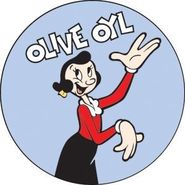
Issue: certain oils do not seem to be “stable” at high heat. What does this mean?
The way I understand it, when exposed to high heat, certain chemical compounds appear to break-down, oxidize or otherwise change form into a worse version of themselves. Apparently, this can lead to the production of certain chemicals like aldehydes which may be carcinogenic.
The problem with all of this is that it is very unclear. Most of the people who makes claims do not link directly to research and I cannot seem to make heads or tails of this.
What Oils? I’ve seen articles and places in books that say olive oil is a risk. For instance, Dave Asprey’s (The Bulletproof guy), Headstrong:
“Oleocanthal [compound in olive oil] is easily damaged when heated, so it’s best not to heat or cook with extra-virgin olive oil.”
But again (some may say in Asprey-like fashion), there is no reference next to these apparently dicey statements.
Then you see a few studies come out of the Mediterranean [large exporters of olive oil, i.e. Financial interest] that seem defend Popeye’s GF. That’s like a study from Phil Morris denying smoking causes cancer.. Oh, wait, that’s been happening for last 60 years!
I cannot find much – so please if you find any real research and hopefully not from the Olive Fund or something like that, I’d appreciate it.
——
OK… there she is.All the foods you can never ever ever eat or drink again!!
Just kidding.. but seriously…
How do I view these foods? I look at these all as things I might do every once in a while. The key is as a friend of mine recently said: to know you have a choice. And to know exactly what you are choosing.
If you want to have a Gusher-spread piece of Challah, wrapped in salami, cooked in olive oil at 700 degrees, and wash ‘er down with a buttery Chardonnay every once in a while, what of it? I know I’ll be eating several pumpkin pies over the course of Thanksgiving Weekend – a guaranteed tummy-ache.
The key is just knowing what you are trading here. You are trading momentary dopamine for a millimeter of long-term thriving. If you do this enough, those millimeters turn into feet and then miles and then your Healthspan becomes quite short in comparison.
By the way.. there is a distinct reason why I did not use the word “moderation” above. I will get much more into that in a future post, but suffice it to say, I really dislike that word, or at least how it is used.
Here’s to a life of boring austerity.
Besos (apparently I’m a Cabaret dancer?),
Justin

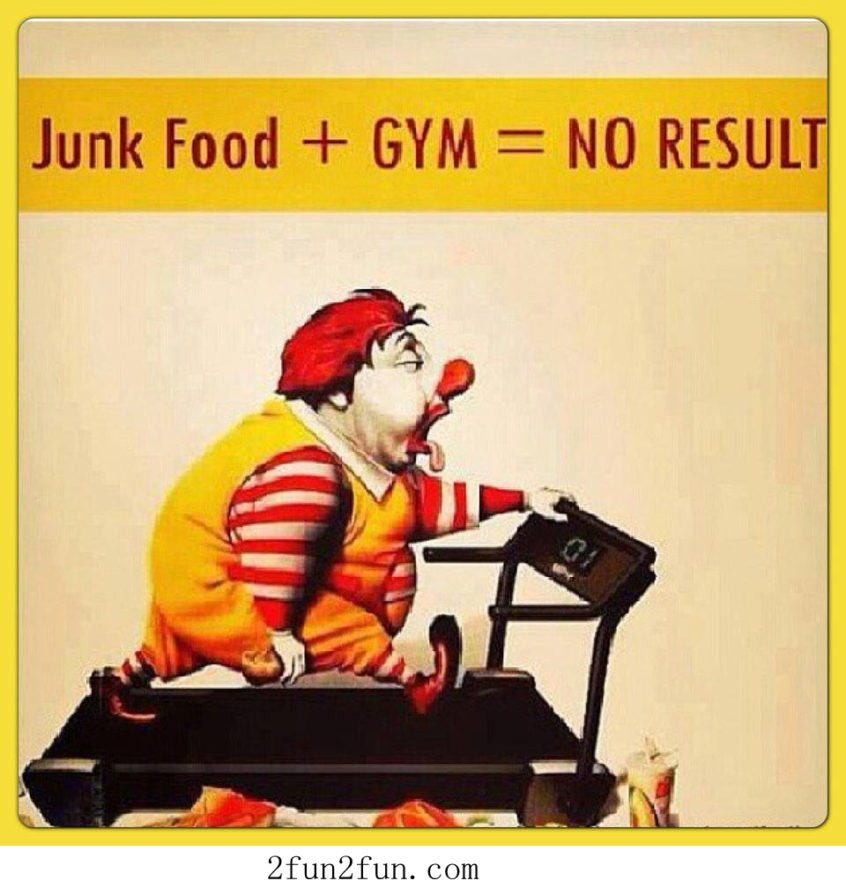
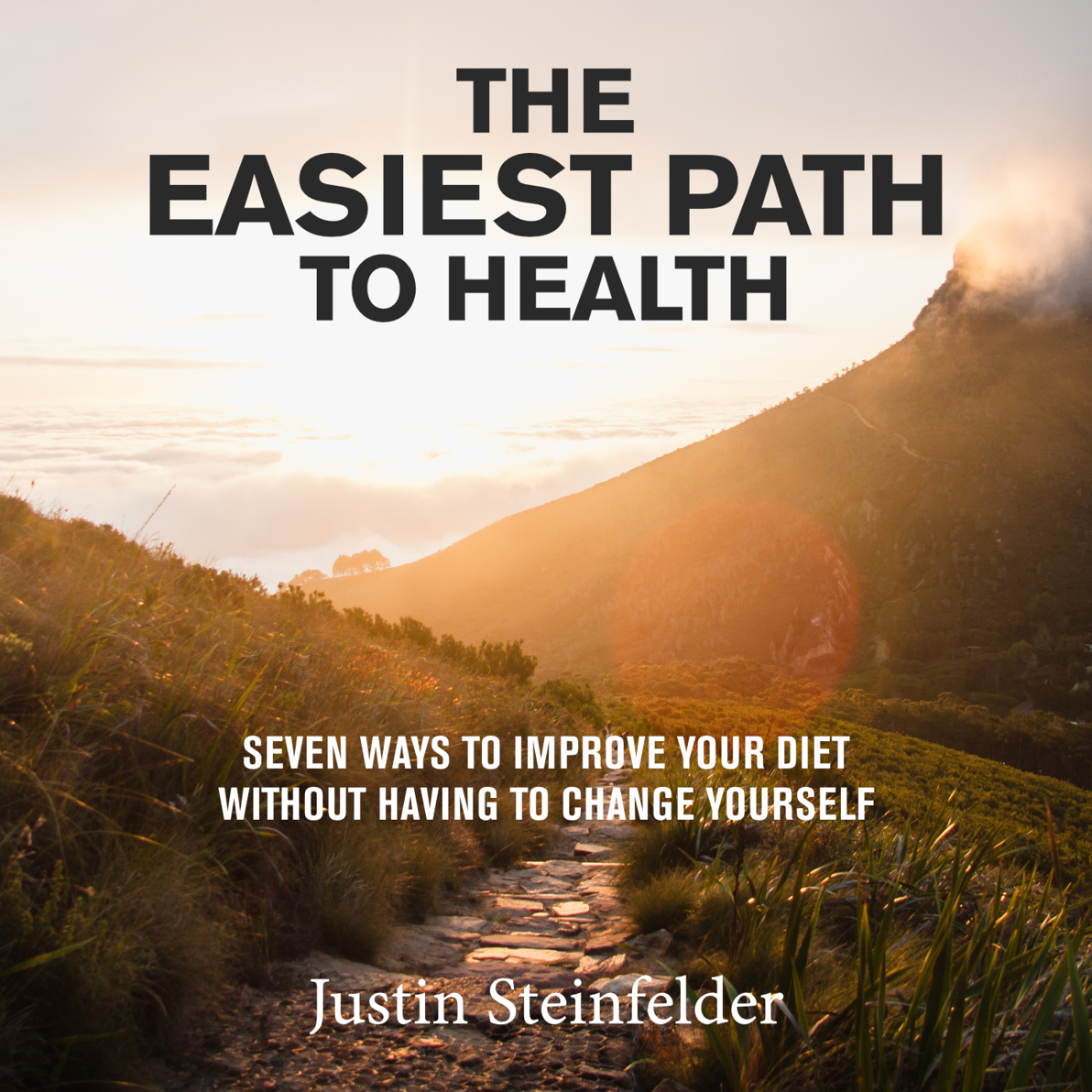

3 Comments on “The “Red-Light” Foods: Expert Consensus on What Foods May Cause Disease”
I I am taking this to heart.
http://24.media.tumblr.com/tumblr_makmgeAtOW1qfrkf9o3_250.gif
Very informative. Would you say anything in moderation? Lots to think about! What about dairy?
Love,
The mommy